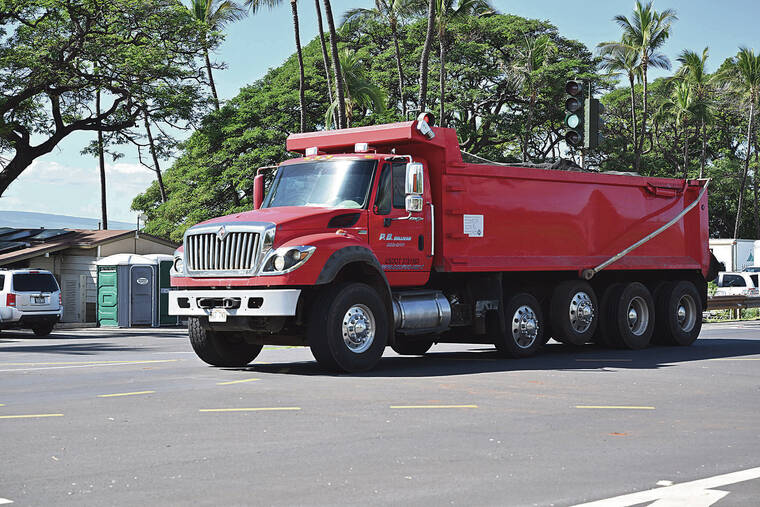Final site chosen for Maui wildfire ash, debris

ANDREW VLIET / SPECIAL TO THE STAR-ADVERTISER
A truck carried debris from the Lahaina fires on the way to the temporary debris storage site at Olowalu on Jan. 16.
Lahaina wildfire ash and debris will be headed to Kahului for final disposal.
Maui County officials picked the Central Maui Landfill over two contending sites in West Maui after an internal analysis adjusted by community survey results.
Shayne Agawa, director of the county Department of Environmental Management, announced the selection Wednesday evening during the county’s weekly disaster recovery community update meeting at Lahaina Civic Center.
The selection followed several months of work that included narrowing the number of potential sites to three from eight, and two surveys that received 2,757 responses earlier this month largely from people who indicated they live on Maui.
“We got very good data,” Agawa said during the meeting. “Your votes made a change in the scoring.”
Applause from the audience followed Agawa’s announcement of the decision, though there was a considerable division among survey respondents who wanted the final resting place for an estimated 400,000 cubic yards of ash and debris to be in West Maui or not in West Maui.
Don't miss out on what's happening!
Stay in touch with breaking news, as it happens, conveniently in your email inbox. It's FREE!
About 20% of respondents said the final disposal site should be in West Maui, and close to 30% said it shouldn’t.
Other factors weighed by the surveys, one of which was a random poll, included site proximity to populated areas and natural resources, traffic and time for the site to be ready.
The Central Maui Landfill, which will need to be expanded to take the debris, had advantages of being far from populated areas and already slated for landfill use.
“It’s pretty much in the middle of nowhere,” Agawa said.
The site also is not somewhere where buried material can infiltrate drinking water sources. On the downside, it is 26 miles from Lahaina and will have traffic impacts given that an estimated 40,000 truckloads will be needed for transportation.
Agawa said mitigation of traffic will be done, and could involve using old cane haul roads for part of the trip.
The losing sites were both north of Lahaina town, in the Wahikuli area and at Crater Village.
Both of these sites are undeveloped, but had bigger scored drawbacks. The Wahikuli area is near residential areas and the coastline, and the Crater Village site could interfere with drinking water sources.
Agawa said that next steps to move ahead with final disposal will be to finish land acquisition work that was already underway to address capacity issues within the current landfill boundary, and to start design and permitting work. The county also will need to obtain funding for the project.
Meanwhile, the county will continue taking debris to a temporary storage site that was constructed at Olowalu within a former cinder quarry 5 miles from Lahaina and next to a closed landfill.
Col. Eric Swenson of the U.S. Army Corps of Engineers said during Wednesday’s meeting that 168 residential properties have been cleared of debris to date.
Close to 3,000 properties were destroyed or damaged by the Aug. 8 wildfire, and at least 101 people were killed.
The estimated 400,000 cubic yards of material to be removed and buried is roughly enough to cover five football fields five stories high. Another 200,000 tons of recyclable material from the disaster area, including metal and concrete, is expected to be diverted from the landfill.



